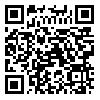







































BibTeX | RIS | EndNote | Medlars | ProCite | Reference Manager | RefWorks
Send citation to:
URL: http://journal.iehfs.ir/article-1-549-en.html
2- Assistant Professor, School of Public Health and Safety, Shahid Beheshti University of Medical Sciences, Tehran, Iran , pouyakian@sbmu.ac.ir
3- Lecturer, Department of Occupational Health Engineering, School of Public Health and Safety, Shahid Beheshti University of Medical Sciences, Tehran, Iran
4- Associate Professor, Department of Epidemiology, School of Public Health and Safety, Shahid Beheshti University of Medical Sciences, Tehran, Iran
Background and Objectives: There are various models of socket wrench in the market varying in the length and diameter of handle and weight. Each of these features alone can modify the force applied by the hand and affect how comfortable the user is. The purpose of this study was to investigate the relationship between dimensional properties and weight of several models of socket wrench with their usability index score.
Methods: 58 male technicians from maintenance units of Shahid Beheshti University of Medical Sciences performed the task of opening 12 bolts with 8 N/m of torque using 6 models of socket wrench with different physical properties. The sample size was selected based on proposed figures for usability studies. The System Usability Index (SUS) validated questionnaire was used to determine the usability score of each model after the experiment. The study was conducted in 2017. SPSS 21 was used for data analysis.
Results: The results showed that there was a significant relationship between usability index score and dimensional properties and weight of wrenches (P<0.001). Wrench models with longer handle and diameter size close to optimum range of diameter of hand tools for male users had a higher usability score, and participants reported a better test experience with these models.
Conclusion: Using the System Usability Index (SUS Questionnaire) to measure the quality of human-centered design of hand tools is a good way to evaluate and select the hand tools that are widely used by technical staff. The results of this study are valid for short-term applications of wrenches. However, for long time activities, epidemiological and physiological evidences such as EMG should also be used.
Received: 2018/09/9 | Accepted: 2019/09/7 | ePublished: 2019/11/11
| Rights and permissions | |
 |
This work is licensed under a Creative Commons Attribution-NonCommercial 4.0 International License. |







